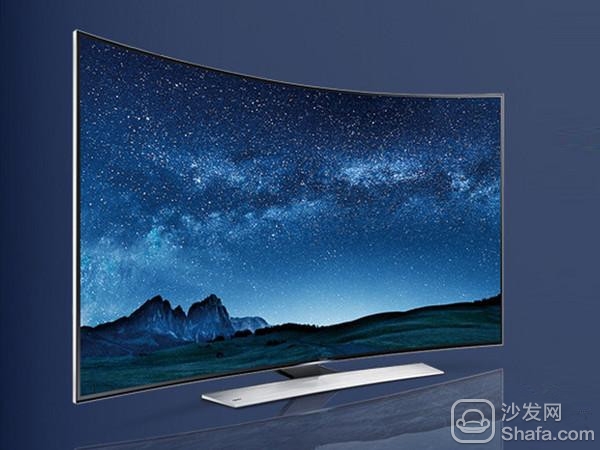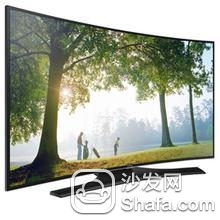Looking back briefly, about 10 years ago, LCD TVs began to emerge. Smaller size and larger display area means that traditional CRTs will be replaced by LCD TVs. Predictions at that time have already been applied in the terminal market. LCD TVs replace CRT TVs. Even faster than the industry’s expectations, LCD televisions have transitioned from traditional CCFL backlights to LED backlights, followed by the emergence of 3D TVs and smart TVs. It can be said that the entire development history of LCD TVs is very fast.
◠Does 4K count as Ultra HD? I’m afraid it’s not

â— Second fallacy: Better dynamic contrast quality

True contrast has substantial reference value
There is a head of debt, and it is Korean manufacturers that brought dynamic contrast to the liquid crystal field. At that time, the best LCD panel contrast was, and after the dynamic contrast appeared, even the TN panel could easily be over, and the dynamic contrast from In the beginning, it was quite astringent and started. After that, it was followed by ,,,,, and never-ending. All the LCD makers were exaggerating their data. Until the last consumer couldn't stand it, LCD makers seemed to be aware of the seriousness of the situation. The dynamic contrast fades out of sight.
Dynamic Contrast loses reference meaning for "contrast" parameter
LCD must use the backlight to display properly, this is the working principle of LCD technology, so the LCD is destined to be in the dark scene can not be zero brightness, in order to render the screen layered, contrast is a very valuable reference parameter, but unfortunately Under the flicker of the Korean brand, this parameter has become "unworthy", which is truly regrettable. We all know that contrast is the contrast between the darkest light and the brightest light, and so-called dynamic contrast technology uses this to make the contrast value more and more exaggerated.
To put it plainly, the dynamic contrast is to deliberately reduce the value of the lowest brightness, defrauding the ultra-high contrast value, meaning nothing to the user. Ironically, some LCD makers are also very clear that dynamic contrast is purely crap, so even though they put the product's dynamic contrast parameters high, they only add a dynamic contrast mode behind text, motion, images, and game modes. If you turn on the dynamic contrast mode, you will find that when you are watching a movie, the brightness is very high when the screen is bright. When the screen is dark, it is almost invisible. There is no practicality at all.
â— Fallacy 3: The quality of the new LED backlight technology is stronger than traditional CCFL backlight

A naughty little boy who wants to grow into a mature man needs a certain amount of time and process. For a new technology, in fact, the same truth, as early as 2009 or so, the new LED backlight technology ready to go, there is great momentum to replace the traditional CCFL backlight technology, TV manufacturers in order to squeeze more profits in the LED TV, blindly For the beautification of the LED backlight technology, the most unbearable is: LED backlight technology quality better than the traditional CCFL backlight.
The new LED backlight structure is simple and more energy-efficient (at the same time, it sacrifices the image quality)
As we said before, CRT TVs have actually developed to the late stage and have made remarkable progress in all aspects. However, the oversized volume has limited the possibility of further development (try to think about how big the “Bottom†of 55-inch CRT TVs will be. Don't think about it.) When the new LED backlight technology first came out, the technology was still not mature enough. At this time, there were TV manufacturers propagating LED picture quality better than CCFL, which was an extremely irresponsible behavior.
The most persuasive example is the professional display brand EIZO. I once consulted with Japanese executives who came to China to announce new EIZO monitors. At that time, I asked why EIZO's monitors were all CCFL backlighting. They came from Japan. The EIZO executives did not hide the message: LED technology is not mature enough, the color is not good control, only CCFL backlight products can achieve professional-level display, and he predicts that LED technology needs at least 3 years of development before May achieve professional quality.
Professional display products adhere to CCFL backlight to ensure high image quality (Illustration: Eizo ColorEdge CG243W)
The experts in the display industry are quite authoritative, and it turns out that EIZO really brought the LED backlight to the professional-grade display body after 3 years. In order to meet the professional demands of professional customers, EIZO has been sticking to the CCFL backlight lineup because only CCFL backlight can provide professional-quality performance. This matter undoubtedly gave those who advertise LED backlighting quality is better than CCFL backlighting a slap in the face.
Of course, professional-level display manufacturers have gradually faded into LED backlights after they have been exposed to LED backlighting (which took almost 5 years).
â— OLED is unfathomable: careful pay for quantum dots

QLED TVs outperform existing WLED TVs
The OLED (Organic Light Emitting Diode) display technology is entirely another display mechanism. Compared to the liquid crystal display technology experiencing the “three-chao, veteran†backlight system, the OLED display technology can work without the help of a backlight. In addition, the OLED has many liquid crystals. Unpredictable physical characteristics. In other words, no matter how excellent the QLED QDs are, LCD technology can only be pushed to a new height, and replacing OLED display technology is not its meaning.
OLED display technology: true without backlighting
Quantum dot QLED display technology intuitive experience, color performance is indeed stronger than the existing WLED traditional TV, but in the color transition and dynamic picture fluency, there are still some flaws. We hope this is an individual case of QLED TV, but it also shows that quantum dot QLED display technology is in its early stages of development, and there are still many possibilities for being immature and uncertain. This is the only way for any display technology to grow from maturity to maturity. I hope users are cautious.
In 2015, there will be more and more QLED TVs listed, basically positioning high-end flagship models, so the price is significantly higher than the same size WLED TV, and even close to OLED TVs. Therefore, Quantum Dot QLED display technology is still difficult to flicker to the mainstream market. As for quantum dot QLED TV, what is worth buying? The author's suggestion is: For consumers who are really good money, please directly purchase genuine OLED TVs, because only OLEDs are eligible to call it "sub-era display technology."
· Cruel market competition, rich profit returns
Finally, the major mistakes enumerated in this article are only the tip of the iceberg in the history of LCD TV development. If you wish, more and more cautious flicker is simply not in place. The purpose of this article is actually very simple, to understand where we are being cheated, at the same time to the current market and future market outlook, to remind consumers to recognize their own product needs, as far as possible to avoid being cheated by manufacturers and shopping guides.
Buy 4K TV should pay attention to the quality and sound quality synchronization upgrade
To be honest, the competition in the market is very cruel. Sometimes the manufacturers are forced to “fail to be exaggerated†in publicity. In this case, users must be forced to read more articles and learn more about technology. It is easy to be fooled by manufacturers. Once the user is successful by the consumer, it will pay for immaturity and unnecessary features (the initial smart TV is a typical case), so as to obtain a lucrative profit return.
Quantum dot QLED TV still suffers from "all flaws in LCD technology"
As the saying goes, the essence of buying will never be sold. The tricks that were discovered today may be too late. TV manufacturers have already earned the money they earned, and tomorrow there will be new weird tricks waiting for us to crack the consumer. Between manufacturers is destined to be a family. Seeing here, some readers may feel dissatisfied. In fact, we must rationally view this fact. TV manufacturers need to survive. Although some “trick†are excessive, it is precisely these manufacturers that promote the upgrade of the television industry. What consumers want to do is to be rational. Try not to be fooled. Buy the TV product that best meets your needs with the least amount of money.